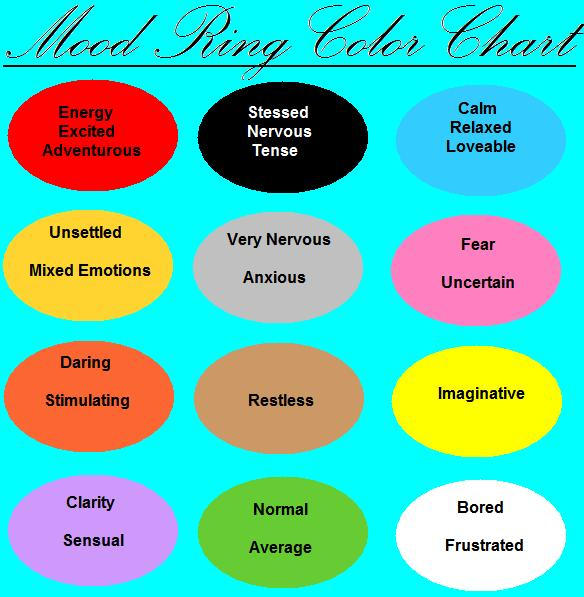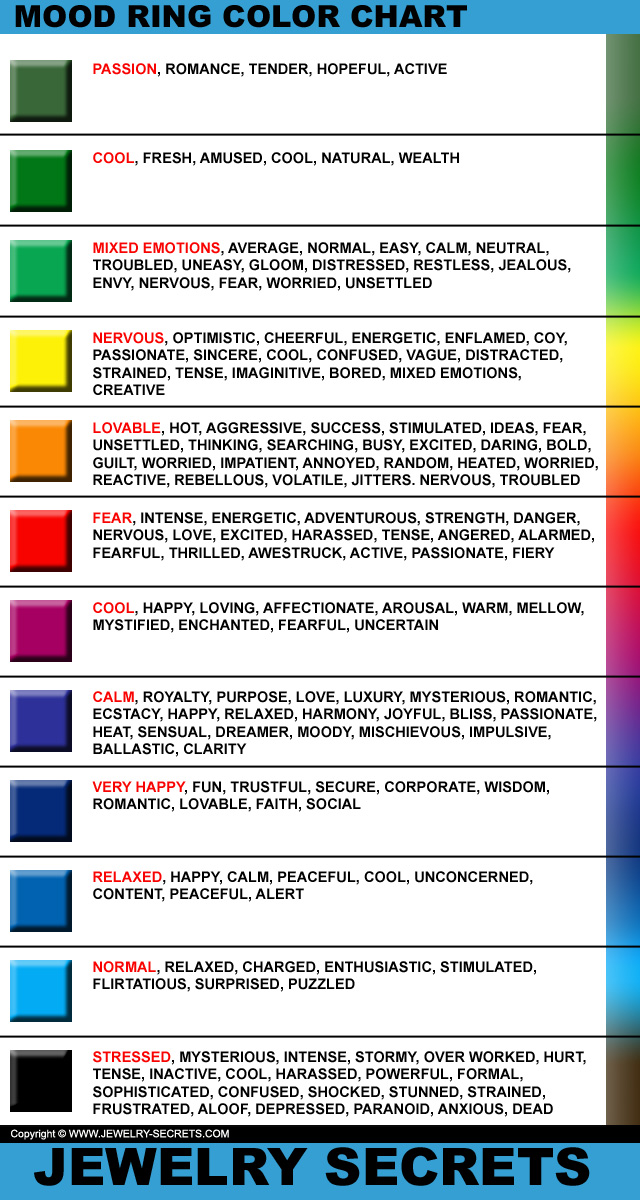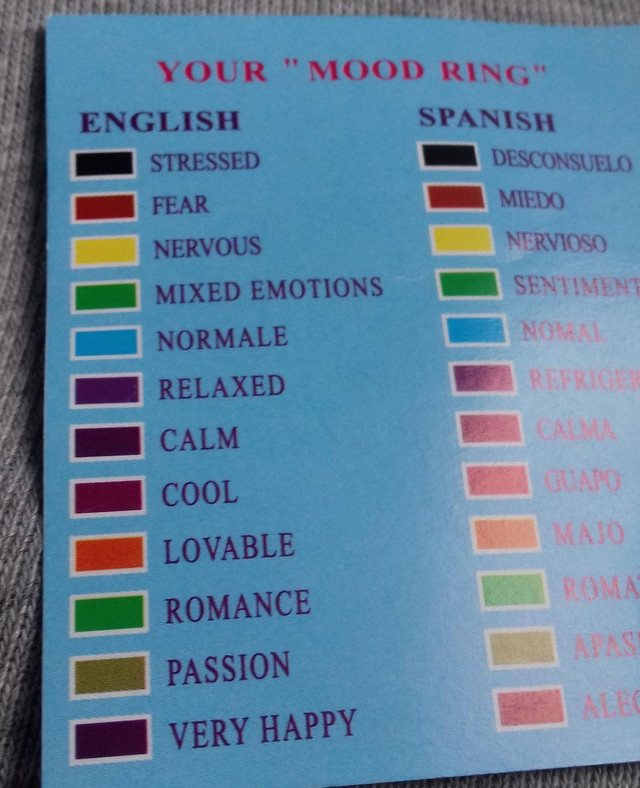If you’ve ever wondered what your mood ring is trying to tell you, you’re not alone. These colorful accessories have been around for decades, promising to reveal your emotions through a simple change in color. But how accurate are they? And more importantly, can we really trust a piece of jewelry to accurately assess our emotional state? Let’s take a closer look at mood rings and their color meanings.
 Mood Ring Color Chart
Mood Ring Color Chart
Let’s start with the basics. Mood rings were first popularized in the 1970s and gained a cult following for their supposed ability to reflect the wearer’s emotions. The concept behind mood rings is that the stone or material in the ring changes color based on the temperature of the wearer’s skin, which is believed to be an indicator of their emotional state. The colors range from blue indicating calm and relaxed to black representing stress or tension.
However, it’s important to note that the color meanings of mood rings are not based on any scientific evidence. In fact, mood rings operate on a basic thermochromic principle, where the color changes are solely dependent on the temperature of the surroundings and the wearer’s skin. So, while it may seem fun and whimsical to believe that your mood ring is telling you something significant about your emotions, it’s really just a result of basic physics.
 Mood Ring Color Chart
Mood Ring Color Chart
Despite the lack of scientific backing, mood rings continue to be popular today, often worn by those who enjoy the nostalgia or whimsical nature of these accessories. Many people find joy in the ever-changing colors of their mood rings and use them as playful conversation starters.
The colors represented in mood rings may vary slightly depending on the manufacturer, but the most common color chart includes: blue for calmness and relaxation, green for balance and harmony, amber for mixed emotions or unsettled moods, black for stress or tension, gray for sadness or depression, and purple for passion or high energy. However, it’s important to remember that these color associations are not universal and may differ from person to person.
 The Meaning of Colors in Mood Rings
The Meaning of Colors in Mood Rings
While mood rings may not have any scientific basis, they can still serve as a whimsical accessory for self-expression or a fun conversation starter. So, the next time you’re feeling curious about your emotions, why not give a mood ring a try? Just remember to take the color changes with a grain of salt and enjoy the playful nature of these colorful accessories.
 THE REAL MOOD RING COLORS - Jewelry Secrets
THE REAL MOOD RING COLORS - Jewelry Secrets
But if you prefer a more reliable way to understand your emotions, it’s always best to rely on self-awareness and open communication. Mood rings might be fun, but they won’t give you the full picture of your emotional well-being. So, embrace the charm of these quirky accessories, but remember that your true emotions are far more complex than can be represented by a simple color change.
 Mood Ring Chart Printable
Mood Ring Chart Printable
In conclusion, mood rings may not have any scientific basis or accuracy in measuring emotions, but they can still provide a touch of whimsy and nostalgia. Whether you choose to believe in their color meanings or simply enjoy them as a fun accessory, mood rings have undoubtedly left their mark on popular culture. So, go ahead and embrace your inner child, and let the colors of your mood ring be a playful reflection of your colorful personality!
 Mood rings | Nostalgasm
Mood rings | Nostalgasm
Funny People Tone